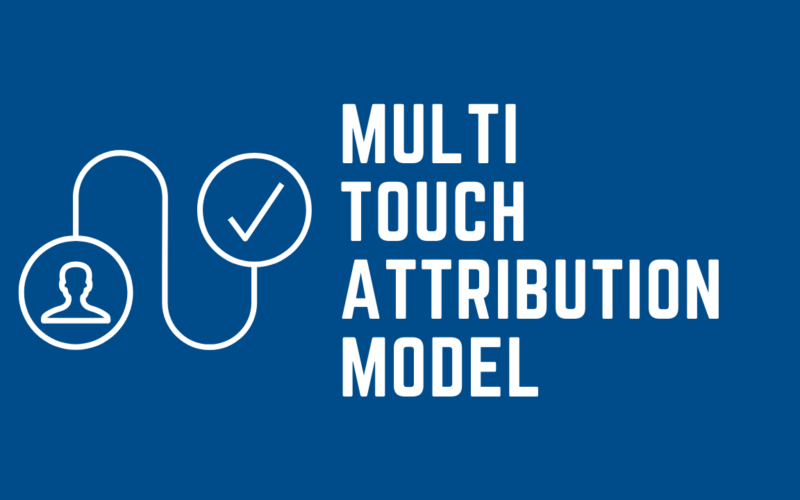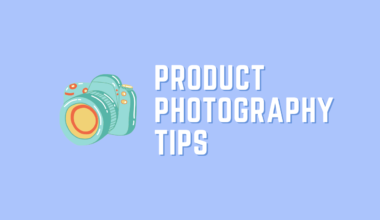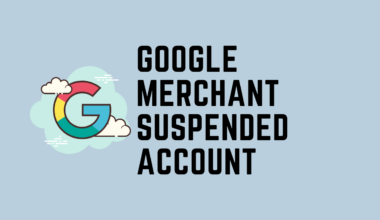If you’re a marketer and still perplexed about how to build multi touch attribution model to boost your sales, read this article till the end. We will primarily talk about the different types of multi touch attribution models, the right way to build it, and everything that comes in between. So without any further ado, let’s begin.
Table of Contents
Understand the Types of Multi Touch Attribution Models First
To convert a prospect into a customer, it takes a lot of good products or services, ads, websites, and most importantly, word of mouth. Tracking these multiple marketing channels is crucial for marketers to effectively dedicate funds at the right touchpoints.
This exactly is what multi touch attribution means. Single-touch attribution on the other hand, they assign all credit to one single touchpoint and analyzing each touchpoint which causes a conversion is impossible using this model.
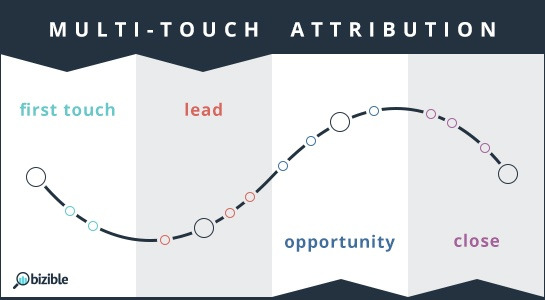
For example, let’s say someone is trying to purchase a coffee maker. After browsing about the same, they get targeted by ads from Amazon. They ignore it the first time and then get encountered by a native ad on Instagram which catches their eye such as they go back to amazon.com.
Finally, they receive a promotional email with a discount code which compels them to finally purchase the coffee maker they were planning to buy. So basically, a multi touch attribution model portrays the impact of the various steps involved in a customer’s journey.
Single-touch attribution models are more popular and easier to implement. They assign all credit to one single touchpoint and analyzing each touchpoint which causes a conversion is impossible using this model.
Listed below are the various types of multi touch attribution models you should know about.
Linear Multi Touch Attribution Model
Linear, as the name suggests, is a sophisticated model which gives the same importance to all interactions in the conversion. In simple words, this model gives equal weightage to every touchpoint equally through the buyer’s journey.
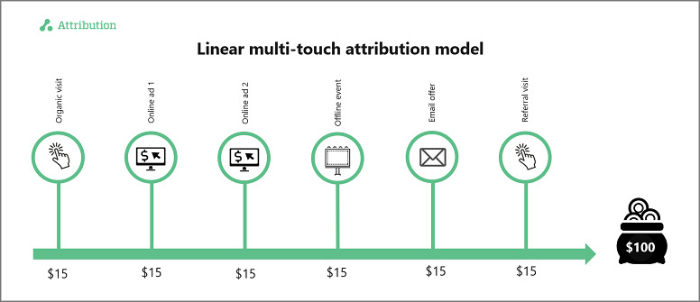
It’s good when we learn more about the overall journey of a client, however the effectiveness of each stage for lead generation remains ambiguous. So, you know what worked for you but don’t know how much.
Time Decay Multi Touch Attribution Model
The time decay multi touch attribution model focuses on the bottom touchpoints of the funnel. Moving downward in the marketing funnel implies lead’s progression from consideration stage to sale.
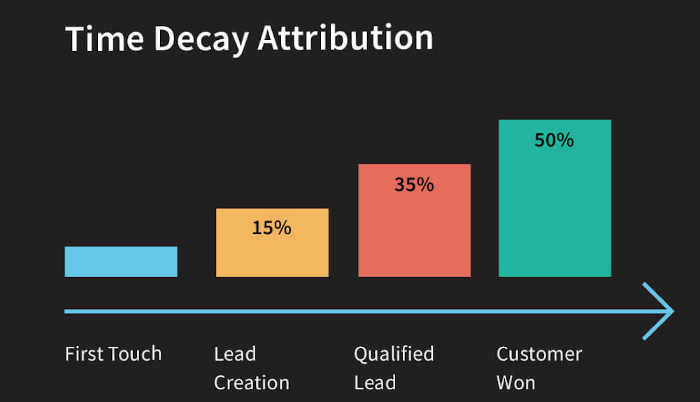
This model analyzes all aspects while delivering a deeper insight on tactics which help in conversions.
U-Shape Multi Touch Attribution Model
U shape multi touch attribution gives maximum credit to the bottom and top funnel engagement tactics. First and last touchpoints are given more credit as compared to mid-funnel touchpoints in this mode.
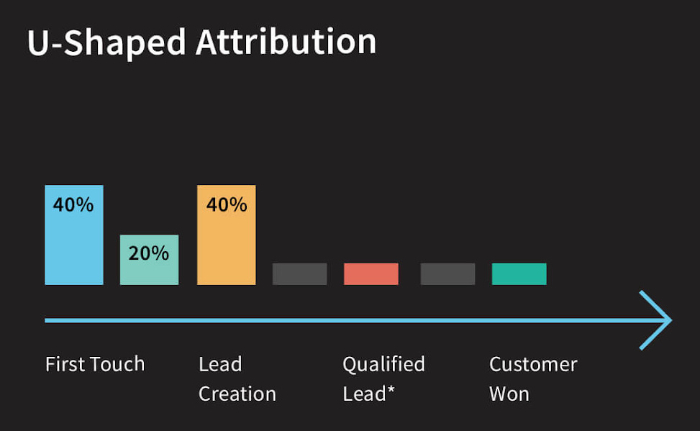
Marketers gain a better insight into which strategies help in kicking off customer’s buying process and ultimately lead to conversions.
W-Shaped Multi Touch Attribution Model
Another multi touch attribution model example is W shape multi touch attribution model. This model evenly distributes credit across top, middle, and bottom touchpoints.
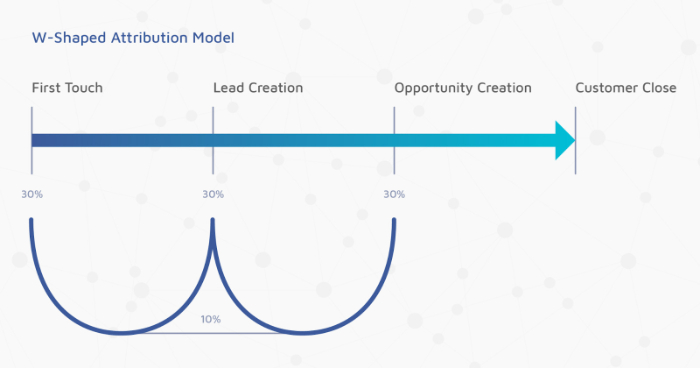
It’s perfect in case of a complex structure with multiple touchpoints involved.
Full Path Multi Touch Attribution Model
This model takes the entire journey of the customer into consideration, allowing marketers to gain an overall insight.
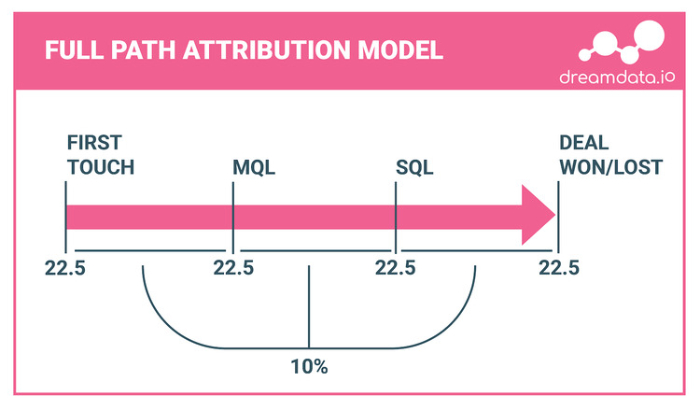
Note: Full Path Multi Touch attribution is one of the most expensive models.
Custom Multi Touch Attribution Model
If the above mentioned models don’t suit your business, choose the custom multi touch attribution model wherein you can custom your own model. However, it requires a hit and trial approach along with an in-depth knowledge about your business.
How to Build Multi Touch Attribution Model – the Right Way
With technological advancements, the complexity of customer journeys is increasing day by day. Learning how to build multi touch model is central to decoding the buyer’s journey and leveraging it to your utmost advantage.
Majority of the users keep switching between platforms to finish a task. Getting information about all touch points across varied channels, platforms and devices adds to the complexity. Wondering how to build multi touch attribution model with these hurdles? There you go, just follow up.
Collecting Data
The first step is to gather data: site visits, what got them there, and whether they converted or not. Calls such as page, track, identify, inbound, UTIs and APIs to record the time when customer views your page, their activity on the page, behavioral traits that match with the information you already have, etc.
Collating & Analyzing
Furthermore, you should compile this data and analyze it. Data warehouses like Snowflake can be used to store all the data securely. You can go for webhooks as well, depending on your technical ability and capacity.
Visualizing Data
Finally, it’s time to visualize the data you stored. The best way to do so is by using charts and graphs. Various multi touch attribution tools such as Segment’s Marketing Attribution Looker Block may work well for you.
When to Use Multi-Touch Attribution?
- For campaigns based on digital spend like paid advertising across different channels and devices
- Whenever we need automation platforms
- When optimization and A/B testing is required
Challenges of Multi-Touch Attribution
Here are a few challenges that marketers may face while enhancing their attribution metrics:
Lack of Offline Data
Incorporating offline data like print ads and online data like clicks that lead to conversions is essential while analyzing the touchpoints in the customer’s journey. However, it can be really challenging for marketers to infuse the two for accurate results.
Data Wrangling
The complexity of data and amount of data can pose a real challenge for marketers. It’s important for marketers to employ multiple attribution models and constantly keep correlating them for accurate figures. Only using multiple models and working in correlation with the data acquired from each of the employed models, we can obtain accurate insights.
Limited Visibility into External Factors
External factors like seasonality may have an impact on marketing efforts. To overcome this, a unified marketing measurement needs to be employed. Unified marketing measurement combined with data offered by multi-touch attribution can provide best results.
The Bottom Line
To gain a comprehensive understanding of the customer journey in your business, choose a multi touch attribution model while keeping the possible difficulties in mind. It has never been easier to analyze your data, improve your strategy, and optimize your spend despite all the barriers. So, make sure to leverage it for your growth.
